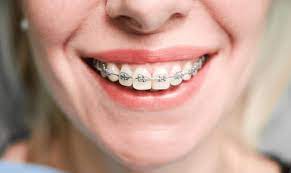Advantages and Disadvantages of Orthodontic Treatment
Orthodontic treatment, primarily known for straightening teeth and improving smiles, goes beyond mere aesthetic appeal. It involves a series of intricate procedures that contribute significantly to oral health and overall well-being. In this article, we delve into the multifaceted benefits and potential drawbacks of orthodontic treatment, providing a balanced perspective for those considering this dental intervention.
Improved Oral Health and Function Orthodontic treatment is instrumental in correcting malocclusions (improper bites) which, if left untreated, can lead to a plethora of oral health issues. By aligning teeth, orthodontic procedures reduce the risk of tooth decay and gum disease, as misaligned teeth are more challenging to clean and more susceptible to the accumulation of plaque and tartar. Additionally, skt kt lg 휴대폰 소액결제 현금화 a corrected bite ensures better chewing functionality and can alleviate speech impediments, contributing to overall oral health improvement.
Boost in Self-Confidence and Aesthetics One of the most notable advantages of orthodontic treatment is the enhancement of one’s smile. Straight, well-aligned teeth are generally perceived as more attractive, which can significantly boost a person’s self-confidence and self-esteem. This psychological benefit should not be underestimated, as it can positively impact social interactions, career opportunities, and overall quality of life.
Long-Term Cost-Effectiveness Although orthodontic treatment can be a significant financial investment initially, it is cost-effective in the long run. By preventing more severe dental issues that could require expensive treatments later, orthodontics can save patients considerable amounts in future dental costs. Additionally, modern advancements in orthodontics, such as clear aligners, have made treatments more accessible and aesthetically pleasing, catering to a broader demographic.
Disadvantages: Discomfort and Time Commitment Despite its benefits, orthodontic treatment is not without its drawbacks. Patients often experience discomfort, especially after adjustments of braces or aligners. This discomfort is typically temporary but can be a source of inconvenience. Furthermore, the duration of treatment, which can span several months to a few years, requires a significant time commitment and regular dental visits for adjustments and monitoring.
Risk of Tooth Decay and Gum Disease During Treatment Orthodontic appliances, particularly braces, can make oral hygiene more challenging. This increased difficulty in cleaning teeth effectively can lead to a higher risk of tooth decay and gum disease if proper oral hygiene practices are not maintained. It is crucial for individuals undergoing orthodontic treatment to adhere to rigorous oral care routines to mitigate these risks.
Potential Need for Tooth Extraction In some cases, orthodontic treatment may necessitate the extraction of one or more teeth to create space for alignment. This aspect can be daunting for patients and is a factor to consider when evaluating treatment options. However, with advancements in orthodontics, such as arch expansion techniques, the need for extractions has been significantly reduced.
Post-Treatment Retention After the active phase of orthodontic treatment, patients must often wear retainers to maintain the results. This post-treatment phase is crucial, as teeth can shift back to their original position if retainers are not used as directed. Compliance with retainer use is essential for long-term success but can be viewed as an inconvenience by some patients.
Conclusion Orthodontic treatment offers a spectrum of benefits that extend far beyond cosmetic improvements. By addressing dental misalignments, it plays a pivotal role in enhancing oral health, functionality, and overall quality of life. While considering the treatment, it is essential to weigh these advantages against the potential drawbacks, such as discomfort, time commitment, and ongoing maintenance. With a comprehensive understanding of these factors, individuals can make informed decisions about their dental health and embark on a journey towards a healthier, more confident smile.

